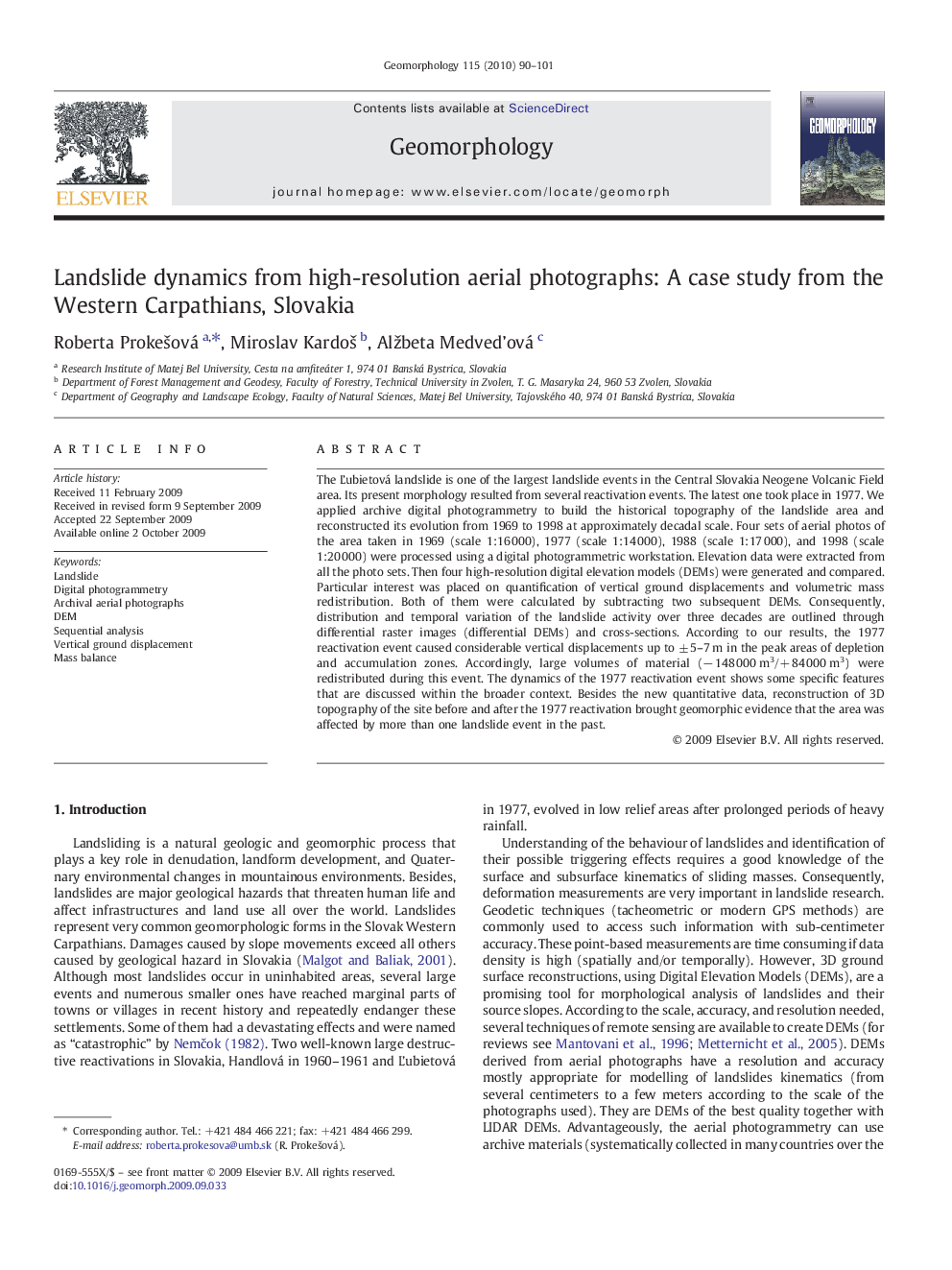| Article ID | Journal | Published Year | Pages | File Type |
|---|---|---|---|---|
| 4686108 | Geomorphology | 2010 | 12 Pages |
The Ľubietová landslide is one of the largest landslide events in the Central Slovakia Neogene Volcanic Field area. Its present morphology resulted from several reactivation events. The latest one took place in 1977. We applied archive digital photogrammetry to build the historical topography of the landslide area and reconstructed its evolution from 1969 to 1998 at approximately decadal scale. Four sets of aerial photos of the area taken in 1969 (scale 1:16 000), 1977 (scale 1:14 000), 1988 (scale 1:17 000), and 1998 (scale 1:20 000) were processed using a digital photogrammetric workstation. Elevation data were extracted from all the photo sets. Then four high-resolution digital elevation models (DEMs) were generated and compared. Particular interest was placed on quantification of vertical ground displacements and volumetric mass redistribution. Both of them were calculated by subtracting two subsequent DEMs. Consequently, distribution and temporal variation of the landslide activity over three decades are outlined through differential raster images (differential DEMs) and cross-sections. According to our results, the 1977 reactivation event caused considerable vertical displacements up to ± 5–7 m in the peak areas of depletion and accumulation zones. Accordingly, large volumes of material (− 148 000 m3/+ 84 000 m3) were redistributed during this event. The dynamics of the 1977 reactivation event shows some specific features that are discussed within the broader context. Besides the new quantitative data, reconstruction of 3D topography of the site before and after the 1977 reactivation brought geomorphic evidence that the area was affected by more than one landslide event in the past.
